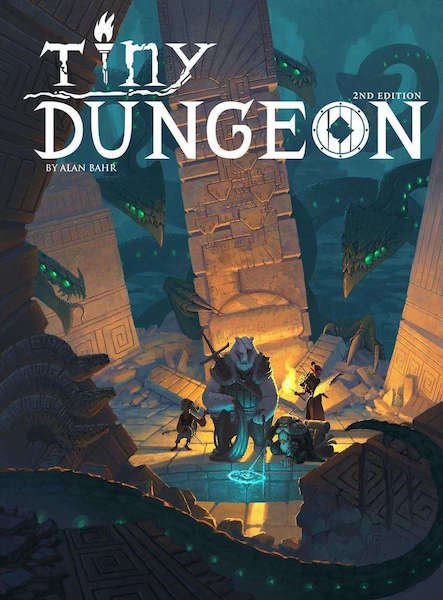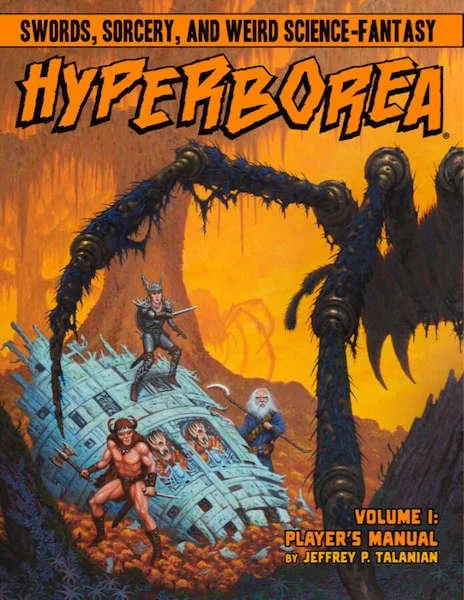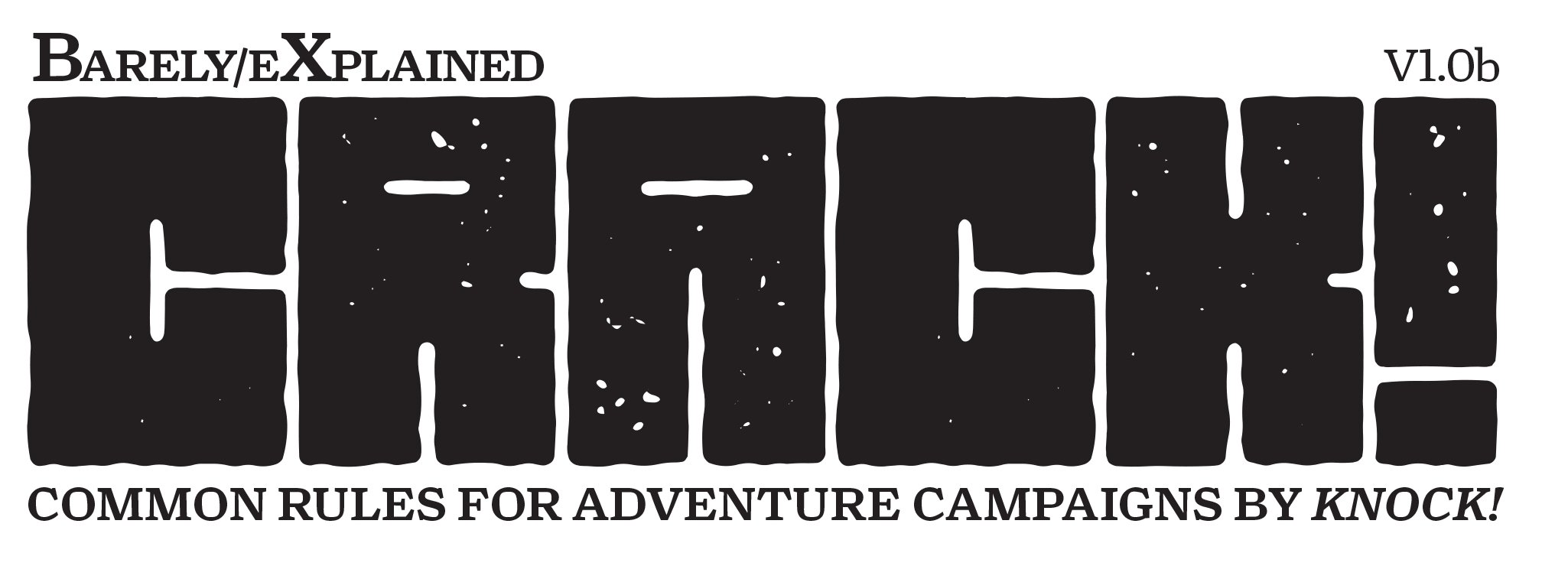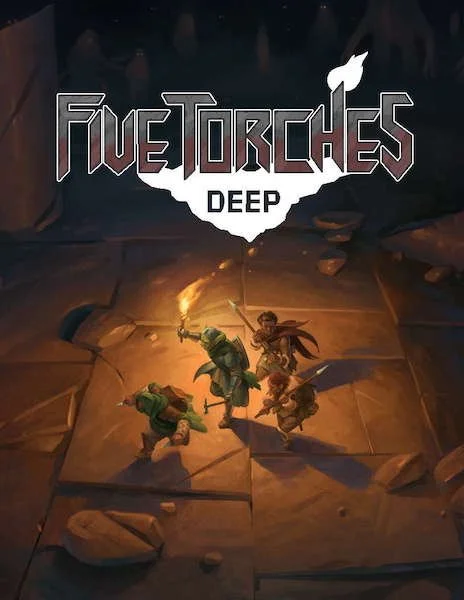Picking an OSR system to build upon
If you’ve been following me on Facebook, Instagram, or Tiktok, you’ll know that I’ve been working on my first supplement for Old School Essentials (tm) and other OSR systems. It’s going to be the first in a line of books called Wondrous & Perilous(tm). Along the way, I’ve been reading a lot of different systems over the past 3 years (a few given a quick review below) as I try to find a system I really like or one that’s close enough to what I need for the world books I’m working on to come to life in the way that I want. What systems am I leaning towards? What effect did the OGL-explosion have? Find out below. First, here’s a preview of the cover.
Coming soon
More than 100 magic items, plus some story plots, to spice up your OSR games and designed for Old-School Essentials(tm) (and maybe one other system? See below).
Some Quick Reviews
Over the past several months, I’ve read several systems and thought rather than giving each one it’s one full review I’d give them a paragraph or two.
Tiny Dungeons - 2e
I was intrigued enough by what I read of the reviews, and the summary, that I bought the physical 6x9 version of the rulebook. The book-formatter and publisher in me was not disappointed in the quality as it’s well laid out, small touches that I really appreciated that made it easy to read for this dyslexic. Also the art really connected well with the tone, keeping you engaged as a reader who is wondering if this is going to be meaty, or light-weight, enough for you.
Mechanics and Ease of Play? Honestly, at first I thought it was going to have too little to really get my interest, but I was wrong. It has a number of elements from real OSR games like all weapon damage being 1d6 and other simplifications, but then presents what to do if you want to play a bit more advanced. The book and ruleset are pretty complete and fun.
One of the things that I really enjoyed seeing was a few unique races with subtle but meaningful abilities. I really liked the Treefolk who can’t be magically healed but can be healed by sunlight, and I just loved the idea of playing the Karhu - bears.
Worth it? Yes. If you’re looking for a system that feels light, is well thought through, and isn’t falling into any tropes like many other games - give this a serious look. While I won’t be building upon this for my supplements… I can’t help feel like I have to say “for now” because there was so much that I liked about this unexpected treasure.
Hyperborea
This RPG is in that family of games that tried to find a middle ground between OSR and 5e, while putting forward their own world (in this case, particularly and self-described as weird). The game is well written, and introduces a few subtle mechanics as early as showing the ability bonus/penalty charts for each state - like the chance of success for a test of Strength and for an Extraordinary test of strength (most stats have this test and extraordinary test concept).
Hyperborea sets the stage very simply for the new comer by stating there are 4 principal classes - Fighter, Magician, Cleric, and Thief. Then from there, it proceeds to offer subclasses (6 for Fighter) and what I find interesting is there is clear effort to make each of the subclasses there own thing - including having some that are a combination of classes like the Warlock (Fighter subclass). I liked these. It showed effort and a designer’s intent to keep things simple and clear while offering flexible play. The classes also keep the OSR concept of “Lordship” at 9th level, which is a nice nod and all classes end at 12th level.
It also makes a good effort on defining Adventure Actions, rules around attribute checks and climbing, etc. Unlike many similar games, Hyperborea really makes the effort to be complete. There were also some magical items that (particularly given my upcoming book) were fun to see.
Worth it? Yes, but (oh oh - no, it’s not like that) — but, this game really comes across as having a very strong setting feel which made it hard for me to imagine running it outside of its own world. If you’re looking for something that’s a blend of OSR and 5e, and that’s got an indie feel to it, give it a shot. Some of the art took me back to old school times and I kept getting a “Thundar the Barbarian” vibe from it.
In my search for a new gaming system that really clicks with me, and in the aftermath of the OGL, CRACK showed up on my radar. It’s by The Merry Mushmen who put out KNOCK (for the Zine lovers like me out there).
Firstly, I have to say that reading CRACK was a ton of fun. It’s got a lot of cheek to it, and I loved that. The intent is for this to be a framework, a loose cobbling of OSR type rules that other games could be based on. It’s like if you took the 5e SRD, but for old-school, and then boiled it down until it was a thin broth. And sadly, that was the problem for me - the broth was too thin.
I think had the OGL situation gone a different direction, for example there being no SRD, no OGL anymore, and if we’d needed a framework that used similar words and captured those familiar concepts, this would have been something more intriguing. But instead, it’s something that if you aren’t used to defining your own thing (I’ve been writing homebrew RPGs and materials since I was about 10 years old… then wrote novels, now I’m back at age 50 to bring those two worlds together) then I get it.
Worth it? I’d say yes, if nothing else than to remind you of the commitment that this group of Merry Mushmen & Friendos have AND it will be the basis for their following Knock! works, so I’m sure we’ll see this evolve.
Five Torches Deep
I’ve seen 5TP come up A LOT on Reddit, and a bit in the Facebook groups I’m on. Whenever someone was looking for a blend of 5e and OSR this invariably gets mentioned, usually after Knave.
While it’s got more modern art (which I appreciate), the layout was the first thing to make me mad. It’s got a 3 column per page style, which as a dyslexic whose brain doesn’t like linear order of reader to start with, I had to zoom in and out on my iPad to read it. It’s one of those ‘too clever by half’ type experiences. They do have a Mobile version of the PDF) but it doesn’t have the same art - which was disappointing.
In terms of the game mechanics, this came across as being overly focused on dungeon exploration, and after having read Hyperborea, really let me disappointed. The "SUP” concept, which is a supply mechanic that allowed you to have a measure of food, torches, etc. Interesting, but made the game feel even more overly focused on one style of play, and missing anything to build off of for more role-playing elements. I was also not a fan of healing being harder as there didn’t seem to really be a reward for it.
One of the things that bothered me was that it makes reference to you drawing on your favorite OTHER systems for making items and creatures. It has a section on building monsters and then has 6 as examples. That’s all the creatures it comes with, 6.
Worth it? Honestly, there are very few systems I’ve bought that I felt any amount of buyer’s remorse, but this was one of them. Compared to Hyperborea, it is greatly lacking. It’s not complete, so you can’t just start with 5TD and go - you’d have to buy books from some other system and then would be concerned about doing conversions for the techniques and strength concepts. So in brief? No, not really worth it.
What am I leaning towards?
In the aftermath of the OGL-pocalyse, I went back and re-read the 5e SRD (official CC edition), but I just see too many issues with 5e’s mechanics. Character creation is too heavy, game balance breaks down around 9-10th level versus Pathfinder, for example. I have been reading Pathfinder, and while there’s a lot that I’m liking, it’s heavy as well.
I’ve been going back and forth on whether to build what I want for my world books on top of Old-School Essentials which is great for what it is, but I feel like I’m going to have to fill in too many of the blanks. This then has me wondering ‘would it still resemble OSE much?’? Do I base it off a lightened PF2? Maybe. AND THEN…
Then I was getting some notes together for this post and I re-read my Castles & Crusades notes, then re-read the posts, went through the PDFs and… well, MAYBE I just sent an email over to Troll Lord Games asking a question about their 3rd party license.
I was supposed to read C&C’s Monsters & Treasure book for a review a while ago. I think with this published, I’m going to start reading it. I have a funny feeling the system that I may be fitting best with is right in front of me. We’ll see.
Don’t be surprised if you end up seeing that Wondrous & Perilous - Treasures vol.1 has a “Compatible with C&C” sticker on it… just saying.





